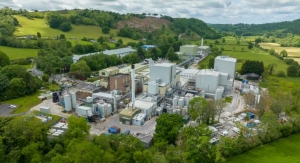06.26.23
Vitamin E supplementation appeared to significantly reduce markers of oxidative stress and muscle damage brought on by exercise, a meta-analysis of 17 randomized, controlled trials (RCTs) found. The findings were published in Nutrients.
Several molecules and signaling cascades are involved in muscle function, including enzymatic antioxidants which increase resistance to fatigue and reduce oxidative stress. Vitamin E is an antioxidant which can reduce lipid peroxidation associated with exercise, therefore it is theorized that vitamin E may be helpful in reducing exercise-induced muscle damage.
In the review, 17 RCTs were chosen from 44 studies with comparable markers, measurement frequencies, and validated exercise protocols. The investigations used assessed biomarkers such as creatine kinase (CK), lactate dehydrogenase (LDH), malondialdehydes (MDA), total antioxidant status (TAS), and interleukin-6 (IL-6).
Dietary vitamin E supplementation's impact on exercise-induced muscle damage was investigated using CK and LDH concentrations. They discovered that vitamin E supplementation had a significant impact on muscle damage immediately after exercise. Furthermore, low dosages of vitamin E supplementation (500 IU daily) exhibited a protective impact against muscle damage, whereas high doses (>500 IU daily) had no such effect. Additionally, vitamin E supplementation had a positive effect on athletes' CK concentrations while having no positive impact on non-athlete participants.
While vitamin E supplements had no protective effects on MDA, a marker of lipid peroxidation, TAS levels were still more significantly reduced after exercise in the vitamin E groups than in the placebo groups. The researchers hypothesized that vitamin E supplementation increased the antioxidant capacity before exercise, while inhibiting free radical production during exercise.
“The protective effect of vitamin E became apparent when CK and MDA were measured immediately after exercise or in athletes,” the authors concluded. “Furthermore, low doses of vitamin E supplementation had significant protective effects against exercise-induced muscle damage and oxidative stress. However, vitamin E supplementation was not significantly effective on exercise-induced inflammation, despite the small number of RCTs included. More RCTs are required to analyze various factors generating high heterogeneity to clarify the effects of dietary vitamin E supplementation on exercise-induced muscle damage, oxidative stress, and inflammation.”
"Vitamin E is made up of two broad members – tocopherols and tocotrienols,” said Dr. Ariati Aris, scientific affairs specialist at PhytoGaia, a supplier of tocotrienol and tocopherol supplements. He noted that preliminary signs point to a unique role that tocotrienols may have in endurance capacity and oxidative stress pointing to a 28-day animal study which tested forced swimming in rats.
“As such, vitamin E supplementation has demonstrated potential in mitigating exercise-induced muscle damage,” Aris continued. “By scavenging free radicals and reducing lipid peroxidation, full spectrum vitamin E [a mixture of tocotrienols and tocopherols] may help minimize oxidative damage to muscle tissues. This effect is particularly relevant for endurance athletes who engage in prolonged, strenuous, and repetitive exercise, as they are more prone to muscle damage caused by oxidative stress.”
Aris said that PhytoGaia is currently collaborating with researchers from the University of Malaya in a human clinical trial to evaluate the role of tocotrienols in reducing exercise-induced muscle damage and improving endurance.
Several molecules and signaling cascades are involved in muscle function, including enzymatic antioxidants which increase resistance to fatigue and reduce oxidative stress. Vitamin E is an antioxidant which can reduce lipid peroxidation associated with exercise, therefore it is theorized that vitamin E may be helpful in reducing exercise-induced muscle damage.
In the review, 17 RCTs were chosen from 44 studies with comparable markers, measurement frequencies, and validated exercise protocols. The investigations used assessed biomarkers such as creatine kinase (CK), lactate dehydrogenase (LDH), malondialdehydes (MDA), total antioxidant status (TAS), and interleukin-6 (IL-6).
Dietary vitamin E supplementation's impact on exercise-induced muscle damage was investigated using CK and LDH concentrations. They discovered that vitamin E supplementation had a significant impact on muscle damage immediately after exercise. Furthermore, low dosages of vitamin E supplementation (500 IU daily) exhibited a protective impact against muscle damage, whereas high doses (>500 IU daily) had no such effect. Additionally, vitamin E supplementation had a positive effect on athletes' CK concentrations while having no positive impact on non-athlete participants.
While vitamin E supplements had no protective effects on MDA, a marker of lipid peroxidation, TAS levels were still more significantly reduced after exercise in the vitamin E groups than in the placebo groups. The researchers hypothesized that vitamin E supplementation increased the antioxidant capacity before exercise, while inhibiting free radical production during exercise.
“The protective effect of vitamin E became apparent when CK and MDA were measured immediately after exercise or in athletes,” the authors concluded. “Furthermore, low doses of vitamin E supplementation had significant protective effects against exercise-induced muscle damage and oxidative stress. However, vitamin E supplementation was not significantly effective on exercise-induced inflammation, despite the small number of RCTs included. More RCTs are required to analyze various factors generating high heterogeneity to clarify the effects of dietary vitamin E supplementation on exercise-induced muscle damage, oxidative stress, and inflammation.”
"Vitamin E is made up of two broad members – tocopherols and tocotrienols,” said Dr. Ariati Aris, scientific affairs specialist at PhytoGaia, a supplier of tocotrienol and tocopherol supplements. He noted that preliminary signs point to a unique role that tocotrienols may have in endurance capacity and oxidative stress pointing to a 28-day animal study which tested forced swimming in rats.
“As such, vitamin E supplementation has demonstrated potential in mitigating exercise-induced muscle damage,” Aris continued. “By scavenging free radicals and reducing lipid peroxidation, full spectrum vitamin E [a mixture of tocotrienols and tocopherols] may help minimize oxidative damage to muscle tissues. This effect is particularly relevant for endurance athletes who engage in prolonged, strenuous, and repetitive exercise, as they are more prone to muscle damage caused by oxidative stress.”
Aris said that PhytoGaia is currently collaborating with researchers from the University of Malaya in a human clinical trial to evaluate the role of tocotrienols in reducing exercise-induced muscle damage and improving endurance.




























